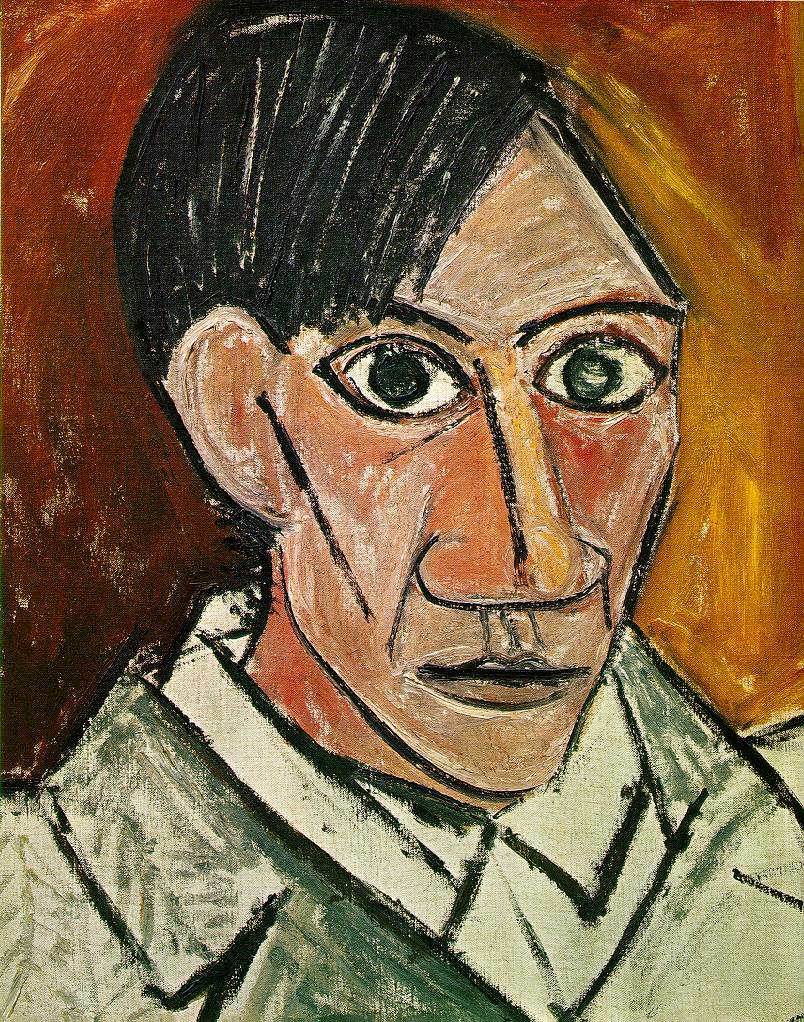
There ist the Word Shu(Śģą) – Ha(Á†ī) – Ri (ťõĘ) in Japan. The EX-Coach of Japanese national football team Mr. Okada told about it. This Word ‚ÄúShu(Śģą) – Ha(Á†ī) – Ri (ťõĘ)‚ÄĚ explain, how people take the steps for mastering the special technical skills on his own Way (for example Art, Kitchen or Architects‚Ķ)
Though I’m Japanese but I don’t know about Japanese classic so much especially. So I’d like to try to use this Word in European context to understand of meaning of this concept.  Picasso is good example for it.
The modern art developed with principle of ‚Äúrealism‚ÄĚ. It means, the purpose and aim of art painting is how ‚Äúreal‚ÄĚ and spirited they looks like. The technique like perspective or contrast of light/shadow etc. has been developing for this purpose. This requirement for the ‚Äúreal‚ÄĚ was doubted slowly about 1880‚Äôs years. Picasso is born in this era and last generation of this paradigm.
The Time in which Picasso was born was the epoch of ‚Äúimpressionism‚ÄĚ. This Genre is the challenge drawing the light on the retina directly on the campus. This way of reconstruction of the light on the campus is against norm of traditional modern art in Europe with rule of ‚Äúrealism‚ÄĚ. The most of people and experts didn‚Äôt understand and did criticize hard. They needed time to be understood their worth in modern art.
Shu(Śģą) means ‚Äúkeeping follow the rule‚ÄĚ. In this context, the rules of modern arts basic with ‚Äúrealism‚ÄĚ. The requirement for artist, to master the basic technique of drawing ‚Äď Perspective, sketch, structure, colors, contrast‚Ķ Picasso has already mastered the basics in his teenager term. His father was teacher of drawing and supported him.
The concept of Genre ‚ÄúAvant-garde‚ÄĚ is often understood as ‚Äúextreme‚ÄĚ. But the sense of this concept is actually asking the question for measure of paradigm in their era and changing perception of society itself through meaning of their works. Picasso lived with and on the big wave of the modern art since the end of 19th Century.
The Gaugans Challenge to draw just only with tone of colors and without depth in perspective is good example. It is asking question for the requirements of ‚Äúrealism‚ÄĚ. Japanese Ukiyoe (śĶģšłĖÁĶĶ) is good praised by avant-garde in European art scene at end of 19th Century, because they are outside of European aesthetics ¬†and didn‚Äôt belong to context of European art. Picasso has broken his Stadium at University and begun making contact with Avant-gardes. He changes his style his self again and again‚Ķ without the end. ¬†Since this moment, the phase ‚Äú Ha ( Á†ī)‚ÄĚ has begun.
.
‚ÄúHa(Á†ī)‚ÄĚis the phase, to use of basic skills for his own style. He can try to break the rules of requirement des art. Picasso challenged to make a new genres like cubism and so on. Although there are much of artitst in same genres, Picasso is always announced as representative of the genres. Why? Where is the difference? The reason is that Picasso has mastered the basic technique of modern European art brilliant. It is totally opposite to the artist who had to invent something new for his survival in the art scenes. However, it doesn‚Äôt mean Picasso reached to the last phase ‚ÄúRi( ťõĘ)‚ÄĚ, because Avant-garde itself is the genre, to make with the requirement something new against the readymade rules of modern art. As far as a genre is made against the paradigm, it means a genre itself belong to the same paradigm.
‚ÄúRi(ťõĘ)‚ÄĚ means ‚Äúbecoming free from requirement‚ÄĚ. If it would be said in this context, ‚Äúbecoming free from the requirements of European modern art‚ÄĚ. Picasso said once in his eventide: ‚ÄúI can finally draw like a children‚ÄĚ. He succeed after 50 years, to become free from european modern art. It means, he has mastered and learned the basic skills of modern art to his bones ‚Äď so fundamentally, that he was being enchained more than 50 years.
